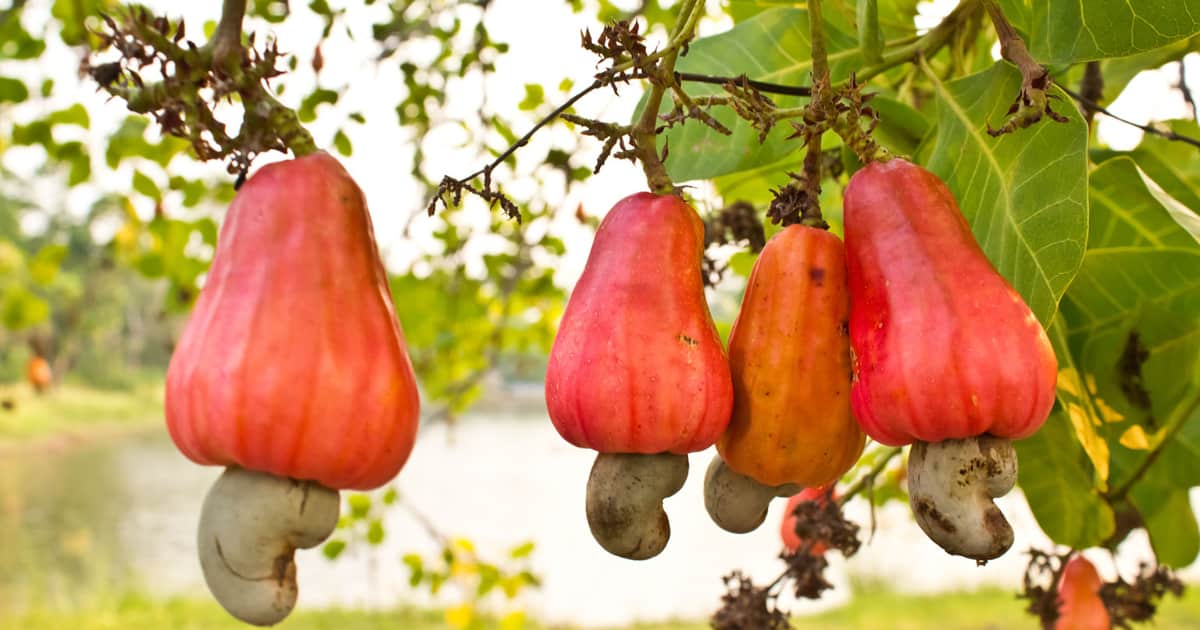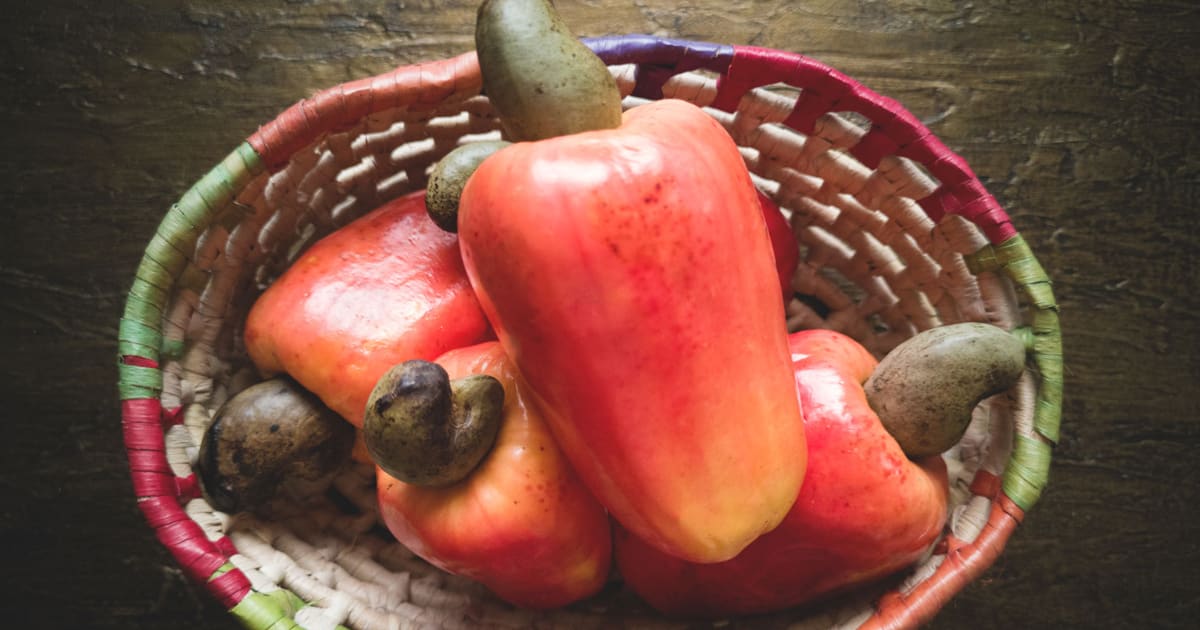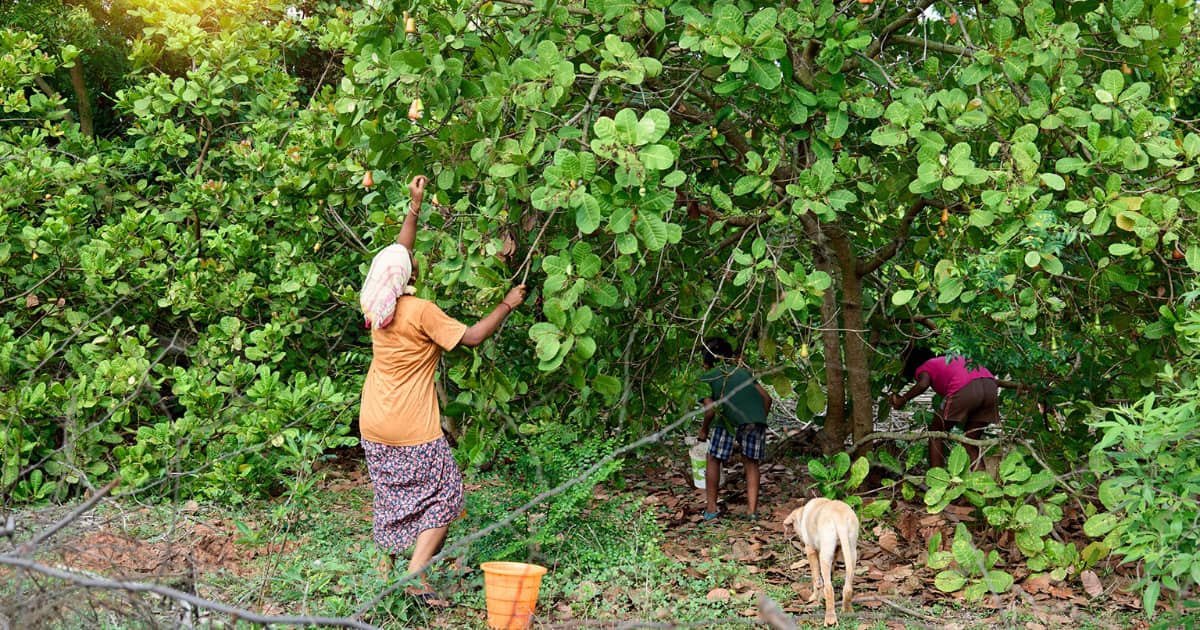As a passionate nut lover, I've long been intrigued by the origin of cashews.
Their distinctive shape, taste, and texture have long made them popular snacks - but did you ever stop to consider if these delicious nuts come from a fruit?
In this article, we'll uncover some surprising truths about the origin of the fruit and dispel some common misconceptions about them.

Introduction to Cashews and Their Origin
Cashews originated in Brazil, first discovered by Portuguese explorers in the 16th century.
However, they can grow throughout tropical regions such as India, Vietnam, and the Ivory Coast.
Their buttery flavor makes them a beloved snack or ingredient in many cuisines today.
The Anatomy of a Cashew
Before answering whether cashew comes from fruit, we must understand their anatomy.
A cashew is just an unshelled seed grown on the end of a cashew apple encased in its hard outer shell, which is removed during processing to reveal the delicious nut we know and loves today.
The seeds consist of two parts: the kernel and the testa.
The grain is what we consume, while the testa is a thin papery layer surrounding it.
As a result, the seed boasts plenty of protein, healthy fats, and essential minerals like magnesium and copper.

The Fruit of a Cashew Tree
Now that we understand the anatomy let's discuss their fruit.
The cashew apple is an oval-shaped fleshy pear-shaped fruit grown on the cashew tree.
It can be yellow or red with a sweet and refreshing taste, often compared to mango and pear combined.
The apple may not be as well-known as its counterpart, the nut, but it's used in various cuisines to make jams, juices, and even alcoholic drinks.
Furthermore, this nutritious fruit boasts high levels of vitamin C and antioxidants - making it an excellent addition to any diet!
Harvesting Cashews
Harvesting them is an uphill task that involves several steps:
- First, the apples are picked from trees and sorted according to size and ripeness.
- Next, seeds are extracted from each apple by hand using a knife to separate the kernel from the testa (skin).
- Next, the seeds are dried in the sun to remove any remaining moisture.
- After they have entirely dried, an automated machine cracks open the shell and separate the kernel from fragments of the shell.
- Finally, the kernels are sorted by size and quality before being packaged for distribution.
This process can take several weeks, requiring meticulous attention to detail to guarantee they are produced of the highest possible standard.

What Makes Cashews Different from Nuts and Fruits
Now that we understand the process of harvesting them let's examine the distinction between them.
Although many people mistakenly refer to cashews as nuts, they are classified as drupes.
Drupes are a fruit with an outer shell surrounding a seed or kernel.
Examples of drupes include peaches, plums, and cherries; cashews may appear like nuts but are actually the apple's seed and thus classified as a drupe.
Common Misconceptions About Cashews
One common misconception about cashews is that they're unhealthy due to their high-fat content.
Although these nuts contain some fat, they also boast healthy monounsaturated and polyunsaturated fatty acids, known to reduce inflammation, lower cholesterol, and improve heart health.
Another misconception is that they aren't a great source of protein.
While they may not have as much as other nuts, they still contain an impressive amount of protein and essential amino acids essential for muscle growth and repair.
Health Benefits of Cashews
They are not only delicious, but they also contain numerous health benefits.
Here are some key advantages that come from including the drupe in your diet:
- Heart health: They are packed with monounsaturated and polyunsaturated fats that may reduce inflammation and lower cholesterol levels.
- Blood sugar control: They are low in carbohydrates and high in healthy fats and protein, making them a perfect snack for people with diabetes or those trying to regulate blood sugar levels.
- Bone health benefits: They provide magnesium essential for strong bones and teeth.
- Weight management: They can also aid weight management efforts due to their high-calorie content, as they induce feelings of fullness and suppress cravings.
Culinary Uses of Cashews
Cashews are an incredibly versatile ingredient in various dishes, from sweet to savory.
Here are some popular culinary uses:
- Snacks: They make an excellent snack on their own or combined with other nuts, dried fruit, or chocolate for a delectable trail mix.
- Vegan cheese: Soaked and blended cashews create a creamy dairy-free cheese perfect for vegans or those with lactose intolerance.
- Smoothies: They can be blended with fruits, vegetables, and other ingredients to create a creamy, nutrient-rich smoothie.
- Sauces and dressings: They can also be blended with herbs, spices, and other ingredients to create flavorful sauces or dressings for salads, pasta dishes, or vegetables.
Conclusion: Yes, Cashews Are From Fruits!
In conclusion, the answer to whether cashew comes from fruit is yes!
Although they may be classified as nuts in popular culture, they originate from the seed of the cashew apple - an edible fleshy fruit grown on the cashew tree.
They are not only delicious but also packed with health benefits.
You can use them in various dishes to add flavor, texture, and nutrition - so the next time you enjoy some cashews, remember that you're eating fruit too!

